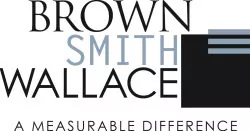Ch-cha-changes
The Internal Revenue Code has been rewritten for small insurers, and according to Alan Fine of Brown Smith Wallace, the time is now to consider the possible effects
In December 2015, US Congress passed and President Obama signed the Protecting Americans from Tax Hikes Act of 2015. The act includes extensions for a number of pro-taxpayer provisions that expired as of 31 December 2014. More important for this audience, however, are the changes to Section 831(b) of the Internal Revenue Code.
Section 831(b) was originally enacted as part of the Tax Reform Act of 1986, providing an alternate tax for small property and casualty insurance companies. As originally written and enacted, those small insurance companies with premiums of less than $1.2 million annually could elect to be taxed solely on their investment income, rather than on the sum of their underwriting and investment income. Unlike many sections of the Internal Revenue Code, which contain mechanisms to adjust for inflation or are amended more often than every 29 years, Section 831(b) had never been indexed for inflation.
The act, which passed in December, finally addressed this issue. First, it increased the limitation from $1.2 million to $2.2 million. The act also provides a mechanism for the $2.2 million limit to be increased in $50,000 increments on an annual basis.
Two tests
The act also adds qualifying diversification requirements that must be met in order for the insurer to qualify for the 831(b) election. There are two alternate tests, at least one of which must be satisfied. The first disqualifies those insurers from making an election where one policyholder accounts for more than 20 percent of the net written premiums or, if greater, direct written premiums. The act includes all related parties and members of a controlled group as one policyholder. The term 'related party' has been written in order to define rather broadly, including entities where there is more than 50 percent common ownership.
The second diversification test looks to the ownership of the captive or insurer compared to its insureds. Under this test, the ownership of the captive can differ from that of the insured by only
a de minimis amount. The act states that unless regulations provide to the contrary, de minimis in this situation is defined as a twopercentage point difference. Note that ownership includes that held through a trust, estate, partnership or corporation.
This test is best illustrated with examples. Assume that the family matriarch owns 100 percent of a group of operating businesses looking to obtain insurance through a captive insurance company, which is owned by a trust of which her daughter is the sole beneficiary. The captive would not be eligible to make the Section 831(b) election because the ownership of the trust is different to that of the insureds. It is unclear whether this result would be unchanged if the matriarch were treated as the owner of the trust for federal income tax purposes due to the operation of the grantor trust rules.
Now, assume that the matriarch owns 50 percent of both the operating businesses and the captive and her children own the remaining 50 percent of both. Since the children's interest in the insureds does not differ from that of the captive, the captive is eligible to make the 831(b) election.
Reporting requirements
In addition, the act introduces reporting requirements for those companies making the 831(b) election in a manner, "as the secretary shall prescribe". It is unclear what form these requirements will take, when the guidance will be issued or when the reporting requirements will begin, but it is presumed that these are to assist the Internal Revenue Service (IRS) in monitoring compliance with these new rules.
Unanswered questions
There are a number of significant questions left unanswered by the new law. First, for these purposes, who will be treated as the owner of a captive owned by a trust that has multiple beneficiaries? Does each beneficiary have a proportional ownership interest in the captive, an equal undivided interest, or will the trust itself be considered the owner?
As mentioned above, how the grantor trust rules will be applied to the diversification rules is also unclear. Do these new diversification requirements follow those rules, or does the statute look to actual legal ownership of the captive?
How will these diversification requirements be applied in situations where the operating businesses, the insureds, are owned individually by spouses?
Will the controlled group rules apply, meaning that each spouse will be treated as owning only their own entities, assuming there is no participation in the non-owned entities? Does the person treated as the owner change depending upon whether the spouses are residents of a community property state?
Also left subject to interpretation is how risk-sharing pools are to be treated for purposes of these rules. Will the IRS follow an established principle that you look through to the underlying insureds to determine who are the policyholders? Or, will the pool itself be treated as the insured? If the underlying insureds are the policyholders it may be possible for the risk-sharing pools to restructure so that the risks each captive insures from related parties account for only 20 percent, with the remaining 80 percent coming from unrelated parties.
Unchanged aspects
So what is unchanged? First, the electing entity must be respected as an insurance company for federal income tax purposes in order to be eligible to make the election. This means that there needs to be appropriate risk shifting and risk distribution.
The policies need to cover insurance risks and the arrangements should ensure that the commonly accepted notions of insurance requirements are all satisfied. Premiums need to be determined on an arm's length basis commensurate with the risks being taken on.
Additionally, the premium limit in Section 831(b), now $2.2 million, is fashioned as a cliff. In other words, if the insurer's premiums in a tax year exceed the limitation by even $1, the 831(b) election is terminated and all of the insurer's income is subject to tax. This remains unchanged by the act.
When measuring against the limitation, Section 831(b) continues to aggregate all insurance companies under common control. This rule prevents the creation of multiple insurers in an attempt to circumvent the premium limitation, utilising the standard corporate controlled group rules with slight modifications.
Time to act
Since the new law does not take effect until 1 January 2017, we have time to more fully develop our understanding of the law and provide clarity into those items where there is uncertainty. We will continue to examine the new law, provide updates and explanation, and work with our clients to ensure that they remain in compliance with the new requirements.
The content of this article is intended to provide a general guide to the subject matter. Specialist advice should be sought about your specific circumstances.

